Cyprus, officially the Republic of Cyprus, is an island country in the eastern Mediterranean Sea south of the Anatolian Peninsula. It is the third-largest and third-most populous island in the Mediterranean, and is south of Turkey and west of Syria. Its capital and largest city is Nicosia.
The earliest known human activity on the island dates to around the 10th millennium BC. Archaeological remains from this period include the well-preserved Neolithic village of Khirokitia, and Cyprus is home to some of the oldest water wells in the world. Cyprus was settled by Mycenaean Greeks in two waves in the 2nd millennium BC. As a strategic location in the Eastern Mediterranean, it was subsequently occupied by several major powers, including the empires of the Assyrians, Egyptians and Persians, from whom the island was seized in 333 BC by Alexander the Great. Subsequent rule by Ptolemaic Egypt, the Classical and Eastern Roman Empire, Arab caliphates for a short period, the French Lusignan dynasty and the Venetians was followed by over three centuries of Ottoman rule between 1571 and 1878 (de jure until 1914).
1.Ancient Kourion
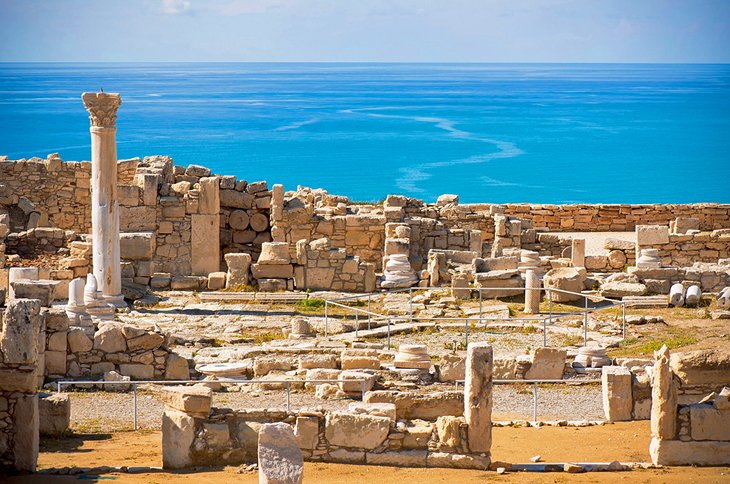
Kourion was an important ancient Greek city-state on the southwestern coast of Cyprus. In the twelfth century BCE, after the collapse of the Mycenaean palaces, Greek settlers from Argos arrived on this site. In the seventeenth century, Kourion suffered from five heavy earthquakes, but the city was partly rebuilt.
The earliest identified occupation within the Kouris River valley is at the hilltop settlement of Sotira-Teppes, located 9 km northwest of Kourion. This settlement dates to the Ceramic Neolithic period (c. 5500–4000 BCE). Another hilltop settlement from the same era has been excavated at Kandou-Kouphovounos on the east bank of the Kouris River. In the Chalcolithic period (3800–2300 BCE), settlement shifted to the site of Erimi-Pamboules near the village of Erimi. Erimi-Pamboules was occupied from the conclusion of the Ceramic Neolithic through the Chalcolithic period (3400–2800 BCE).
In 58 BCE, the Roman Council of the Plebs (Consilium Plebis) passed the Lex Clodia de Cyprus, annexing Cyprus to the province of Cilicia. Between 47 and 31 BC, Cyprus returned briefly to Ptolemaic rule under Marc Antony and Cleopatra VII, reverting to Roman rule after the defeat of Antony. In 22 BC, Cyprus was separated from the province of Cilicia, being established an independent senatorial province under a proconsul.
Under the Romans, Kourion possessed a civic government functioning under the oversight of the provincial proconsul. Inscriptions from Kourion attest elected offices that including: Archon of the City, the Council, Clerk of the Council and People, the Clerk of the Market, the various priesthoods including priests and priestesses of Apollo Hylates, and priesthoods of Rome.
2.St. Hilarion Castle
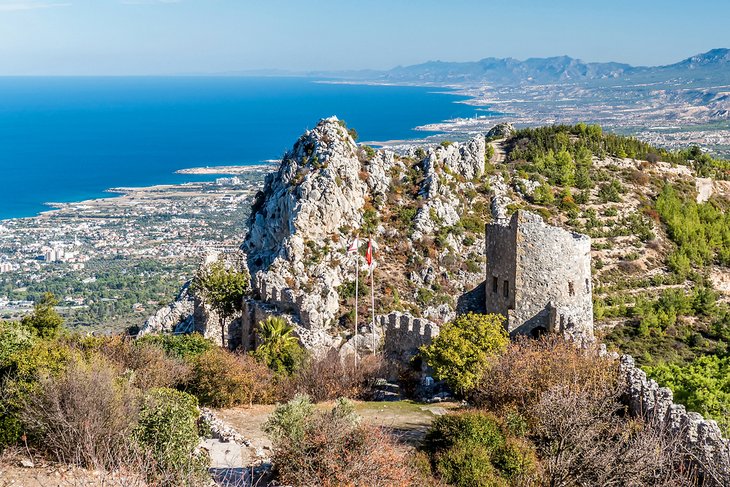
The castle is not named after St. Hilarion, active in Palestine and Cyprus in the 4th century. It was named after an obscure saint, who is traditionally held to have fled to Cyprus after the Arab conquest of the Holy Land and retired to the hilltop on which the castle was built for hermitage. An English traveller reported the preservation of his relics in the 14th century. It has been proposed that a monastery built in his name preceded the castle, which was built around it. However, this view is not supported by any substantial evidence.
Starting in the 11th century, the Byzantines began fortification. Saint Hilarion, together with the castles of Buffavento and Kantara, formed the defense of the island against Arab pirates raiding the coast. Some sections were further upgraded under the Lusignan dynasty, whose kings may have used it as a summer residence. During the rule of Lusignans, the castle was the focus of a four-year struggle between Holy Roman Emperor Frederick II and Regent John d’ Ibelin for control of Cyprus.
Much of the castle was dismantled by the Venetians in the 15th century to reduce the cost of garrisons.
The castle has three divisions or wards. The lower and middle wards served economic purposes, while the upper ward housed the royal family. The lower ward had the stables and the living quarters for the men-at-arms. The Prince John tower sits on a cliff high above the lower castle.
The upper ward was surrounded by a 1.4 metre-thick Byzantine wall, made of rough masonry. The entrance is through a pointed arch built by the Lusignans. This was protected by a semicircular tower to the east. Within the ward is a courtyard, with twin peaks being situated to either side of it. To the north-east is an extremely ruined kitchen. To the west are the royal apartments, dated by various sources to the 13th or 14th centuries. Although mostly ruined today, this was a structure in the northeast-southwest axis, with a length of 25 m and width of 6 m. It has a basement containing a cistern and two floors. The ground floor has a height of 7 m and a pointed barrel vault. The upper floor is known for its carved windows, one of which is dubbed the Queen’s Window. These are placed on the western wall, which has a scenic view of the northern coast of Cyprus, especially the plains of Lapithos.
3.Larnaca
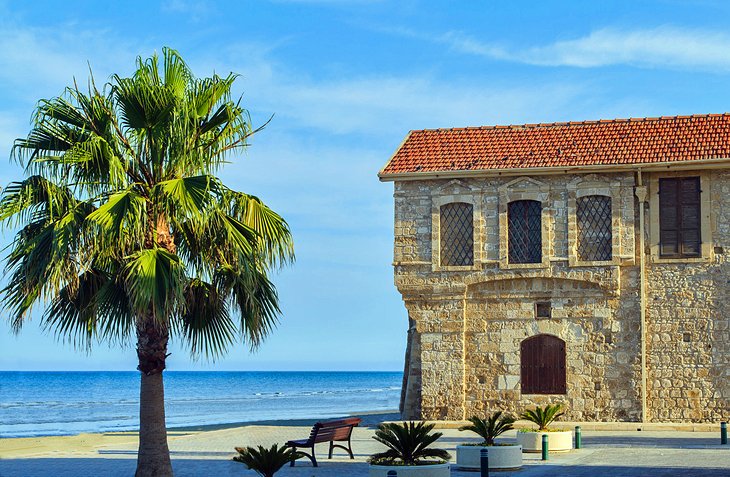
Larnaca (Larnarka) is a port city on the south coast of Cyprus. It’s known for Finikoudes Beach, a sandy strip in the city center backed by a palm-lined seaside promenade. Buzzing bars line the waterfront at Mackenzie Beach. Just offshore, the MS Zenobia wreck is a popular dive site. The 9th-century Church of Saint Lazarus contains the tomb of the saint said to have risen from the dead.
The name Larnaca originates from the Ancient Greek noun λάρναξ larnax ‘coffer, box; chest, e.g. for household stores; cinerary urn, sarcophagus, coffin; drinking trough, chalice’. An informal etymology attributes the origin of the name to the many larnakes (sarcophagi) that have been found in the area. Sophocles Hadjisavvas, a state archeologist, states that “[the city’s U.S.] consul of the last quarter of the 19th century, claimed to have explored more than 3,000 tombs in the area of Larnaca, so-called after the immense number of sarcophagi found in the modern town”.
In the vernacular, Larnaca is also known as Scala (Greek: Σκάλα [ˈskala] from the word σκάλα, a loanword from the Italian scala, meaning “ladder” or “landing stage”) referring to the historical port.
3.Karpas Peninsula
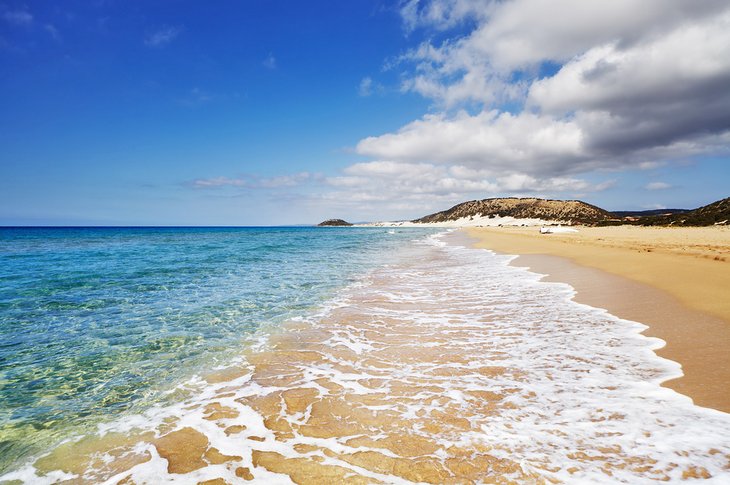
It covers an area of 898 km2, making up 27% of the territory of Northern Cyprus. It is much less densely populated than the average of Northern Cyprus, with a population density of 26 people per km2 in 2010. The town of Trikomo (İskele), the district capital, is considered to be the “gateway” and the geographical starting point of the peninsula, along with the neighboring village of Bogazi (Boğaz). Apart from Trikomo, the most important towns and municipalities in the area are Yialousa, Galateia, Rizokarpaso, Komi Kebir and Akanthou.
The peninsula hosts a number of historical sites such as Kantara Castle and Apostolos Andreas Monastery, as well as the ruins of Agia Trias Basilica and the ancient cities of Karpasia and Aphendrika among numerous others
There are more than 46 sandy beaches in the peninsula, which are the primary Eastern Mediterranean nesting grounds for the loggerhead (Caretta caretta) and green sea turtles (Chelonia mydas). The Golden Beach is situated around 15 km from the town of Rizokarpaso and is considered one of the finest and most remote beaches of Cyprus. It is one of the least tourist-frequented beaches in the island.The Karpas Peninsula is home to the Karpas donkey, known as a symbol of Cyprus; there are campaigns carried out jointly by Turkish and Greek Cypriots to conserve the rare donkeys of the peninsula.
4.Ancient Salamis
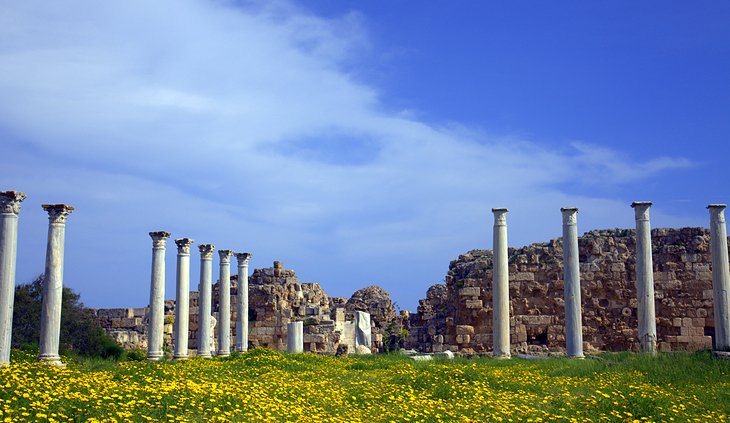
The earliest archaeological finds go back to the eleventh century BC (Late Bronze Age III). The copper ores of Cyprus made the island an essential node in the earliest trade networks, and Cyprus was a source of the orientalizing cultural traits of mainland Greece at the end of the Greek Dark Ages, hypothesized by Walter Burkert in 1992. Children’s burials in Canaanite jars indicate a Phoenician presence. A harbour and a cemetery from this period have been excavated. The town is mentioned in Assyrian inscriptions as one of the kingdoms of Iadnana (Cyprus).In 877 BC, an Assyrian army reached the Mediterranean shores for the first time. In 708 BC, the city-kings of Cyprus paid homage to Sargon II of Assyria (Burkert). The first coins were minted in the 6th century BC, following Persian prototypes.
This huge archaeological site is home to a wealth of marble ruins and ranks up there with Ancient Kourion as the top historical site on the island.
Wandering along the dirt tracks of Salamis between sets of ruins from a muddle of different time periods is a lesson in the vast history of Cyprus.
Grand Hellenistic statuary – missing their heads, which were lopped off by over-zealous Christians – sit amid the ruins of the Gymnasium.
The “cultural centre” of Salamis during the Roman period was situated at the northernmost part of the city, where a gymnasium, theatre, amphitheatre, stadium and public baths have been revealed. There are baths, public latrines (for 44 users), various little bits of mosaic, a harbour wall, a Hellenistic and Roman agora and a temple of Zeus that had the right to grant asylum. Byzantine remains include the basilica of Bishop Epiphanos (AD 367–403). It served as the metropolitan church of Salamis. St. Epiphanios is buried at the southern apse. The church contains a baptistry heated by hypocausts. The church was destroyed in the 7th century and replaced by a smaller building to the south.
5.Kolossi Castle
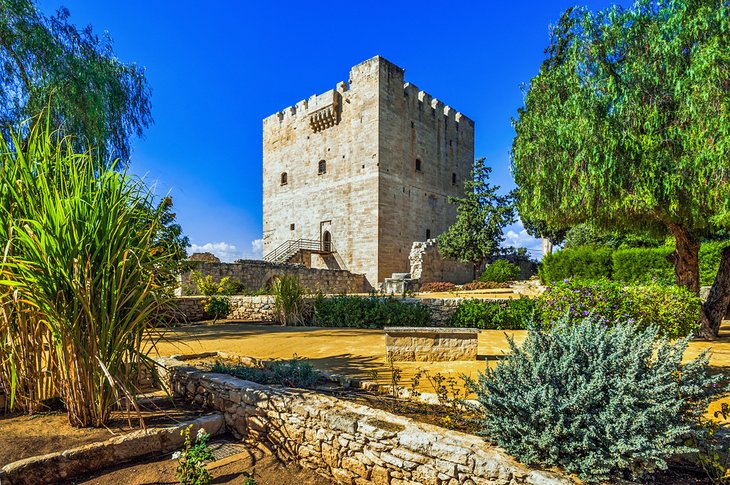
Kolossi Castle is a former Crusader stronghold on the south-west edge of Kolossi village 14 kilometres west of the city of Limassol on the island of Cyprus.
The castle today consists of a single three-storey keep with an attached rectangular enclosure or bailey about 30 by 40 metres (98 by 131 ft).
As well as for its sugar, the area is also known for its sweet wine, Commandaria. At the wedding banquet after King Richard the Lionheart’s marriage to Berengaria of Navarre at nearby Limassol, he allegedly declared it to be the “wine of kings and the king of wines.” It has been produced in the region for millennia, and is thought to be the oldest continually-produced and named wine in the world, known for centuries as “Commandaria” after the Templars’ Grand Commandery there.
If castles had cuteness competitions, Kolossi would surely come up trumps. This tiny but perfectly formed castle just outside of Limassol is an old Crusader stronghold and a reminder of Cyprus’ importance for the Europeans during the Holy Land Crusades.
First held by the Knights of St. John, the castle was used as a commandery for the area, with an excellent location looking out over the coast line.
6.Troodos Villages
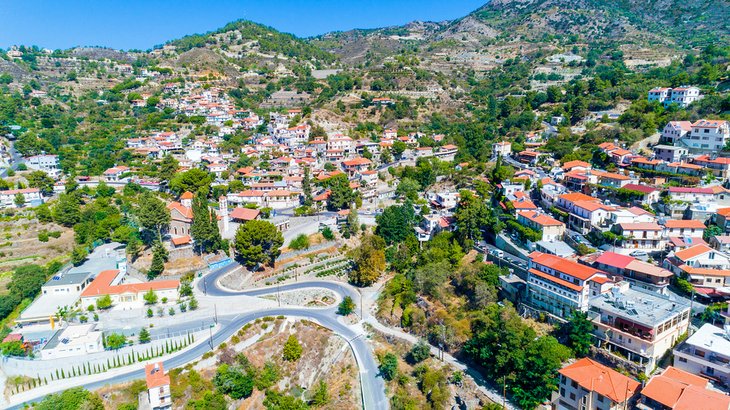
The Troodos Massif (Troodos Mountains), in the hill region of the southwest, are packed full of pretty villages full of stone-cut traditional houses and cobblestone alleys.
They’re also home to some of Cyprus’ most amazing churches and monasteries that hold vibrant frescoes and wall paintings that date from the medieval era.
The Troodos churches are so important historically that nine of them have been given UNESCO World Heritage status.
Hiring a car and tootling around this area, searching out stone cut chapels is a great day out but if you only have time to view one, the Church of Archangelos Michail in the little village of Pedoulas should be top of your things to do list.
For self-drive day trip potential, the Troodos Mountains are easiest accessed using Limassol or Nicosia as your base.
To cut down on the driving there are also plenty of small boutique-style hotels in the main Troodos Mountains villages themselves.
7.Cyprus Museum

The Cyprus Museum is the oldest and largest archaeological museum in Cyprus. The museum houses artifacts discovered during numerous excavations on the island. The museum is home to the most extensive collection of Cypriot antiquities in the world and is located on Museum Street in central Nicosia.
As an institution, the Cyprus Museum was founded in 1882 during the British occupation of the island following a petition by the Cypriot people. This makes the museum 139 years old. The petition was delivered to the British administration by a delegation headed by the religious leaders of both the Christian and Muslim populations.A major catapult for this action were several illicit excavations and the smuggling of antiquities off the island. The most extensive of these had been carried out a few years earlier by the United States Ambassador, Luigi Palma di Cesnola, who had smuggled over 35,000 artefacts off the island, most of which were destroyed in transit. Many of the surviving items ended up in the newly formed Metropolitan Museum of Art in New York and are currently on display in their own galleries on the second floor.
The museum collection has far outgrown the capacity of the existing buildings so much so that only a small fraction is on display at any point in time. With several ongoing excavations and constant new finds, the issue of relocation to more spacious premises has been raised but a suitable site has yet to be decided on. There have been suggestions that the nearby and now demolished building of the Nicosia Old General Hospital be redeveloped, whilst there have also been plans to create a new museum as part of a new larger cultural centre at the site of the old GSP stadium.









